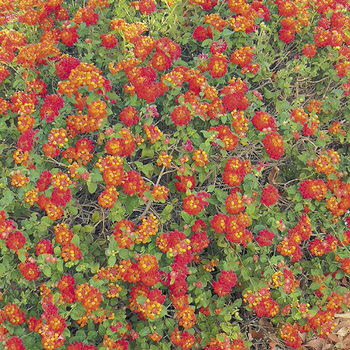 Dannette Hunnel
Dannette Hunnel
The lantana is a low-maintenance, water-wise, long-lasting, shrub-like plant with constant color. Plant lantanas now so they are well established by summer. Lantanas come in many different colors and styles.
Before planting, consider the spot for the new lantana, as they can spread in different ways depending on the varietal.
Trailing, which is low growing. The stick-like stems attach themselves to the ground. The mounding, which grows up to approximately 12 to 15 inches tall and 3.5 feet wide, and a lantana bush, four feet tall by four feet wide, and can be shaped to either a ball, a mound, upright, or square.
Small clusters of flowers bloom freely throughout the plant all year long. Lantanas have a fragrance defined as a citrus-sage scent.
These plants are toxic, so always wash your hands. The lantana leaves are scratchy, and the stick-like stems have stickers, so wear gloves. They do get tiny, dark blue berries, which dry up and go away with pruning.
Newly planted lantanas need to be kept moist for the first few days so that roots spread into the surrounding soil. Then a slow-deep watering weekly so their roots go deeper throughout the dry summer. Ramp watering back down in the late fall. An occasional hose spray to feed the leaves is recommended. If your lantana is well established and healthy, it will do fine for a few weeks for your short summer absences. Lantanas are repellent to rabbits, so they are perfect protection around your veggies or flowers.
These lovely plants have an extensive root system to capture moisture, but they won’t take over your water pipes or other plants; therefore, in the future, if needed, they may be moved and/or transplanted in your yard or, if necessary, completely removed.
Lantanas may remain green and bloom year-round, but on those four or five cold nights, cover with a sheet or burlap until the sun comes up. Also giving them a short drink at sundown keeps them a bit warmer under their blanket. Lantanas also create their own insulating mulch via leaf drop for warmth and moisture.
Lantanas require little fertilizer. If the plant looks a bit blah (after monsoon season), a layer of pine needles gathered from littering trees will increase the acidity. Leave needles for two months to make your lantana happy. Occasionally, lantanas go semi-dormant, losing their leaves and delay flowering until wetter, cooler days return, but it’s nothing to worry about! Prune and/or shape lantanas periodically by lightly shearing the tip growth and across the top. Because it is stick-like underneath, it discourages critters from nibbling, but they are prone to pesky white flies. Use neem oil on the underside of the leaves in the morning or evening when it is cooler. Lantanas are a favorite of butterflies, bees, and hummingbirds. If you see these three frequently floating in your yard, then you know your lantanas are healthy.
